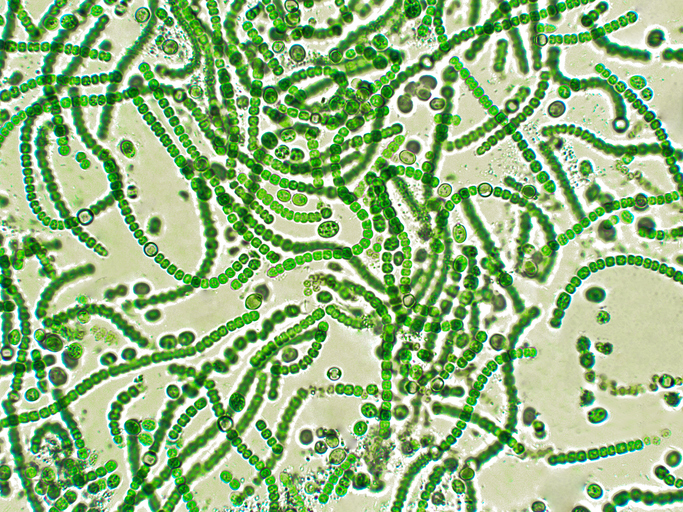Bacteria were first discovered by humans in 1676. This monumental accomplishment is credited to Antoni van Leeuwenhoek, with the help of a primitive microscope that allowed him to finally see what humans had long suspected were tiny little creatures too small to view with the naked eye.
By the time bacteria were discovered, however, humans had already been fighting them off for thousands of years. How did we manage to fight back against bacteria we didn’t even know were there?

It was all thanks to copper.
The science of copper water purification wasn’t understood at that time, but it is now. Copper is an incredible protector of human health, for reasons that will be made clear below.
The ability of copper to protect us from microscopic threats is a big part of the reason why this metal is enjoying such a renaissance. Demand for copper has skyrocketed in recent years, with no signs of slowing down. Thanks to amazing antimicrobial performance, along with its conductive properties, copper is here to stay.
Ancient Wisdom Coming True
Not all ancient wisdom has been borne out by science. In fact, much of it has been debunked. There are plenty of things that people believed thousands of years ago that science has proven firmly to be false.
Copper is a different story. Ancient populations believed in the power of copper, and as it turns out, they were correct to do so. Perhaps nowhere is there a better example of this than in Ayurvedic medicine. Ayurvedic practitioners used a variety of metals, including copper, to effectively treat many diseases and ailments.
Ancient Ayurvedic texts make mention of many uses for antimicrobial copper, known then as Tamra. It was used to address respiratory distress, skin disorders, and eye disorders. Importantly, it was also mentioned that copper containers were used in this period, no doubt to hold water for consumption.
Despite not having the modern scientific understanding of how copper and other metals work to aid the human body, Ayurvedic medicine was able to determine – likely through observation – that copper was incredibly important to clean drinking water and other components of health.
How Copper Purifies Water
In the modern world, we tend to think about water purification as an advanced technological capability. It’s something we believe needs to be done with complicated equipment and a boatload of chemicals.
Water purification is actually a natural process when it occurs organically. Copper can purify water all on its own, using something known as the oligodynamic effect. No product development cycles or experts in lab coats required.

The oligodynamic effect was discovered by a Swiss scientist named Karl Wilhelm Von Nageli in 1893. Ions from metals such as copper are able to destroy a wide range of different microbes in water, reducing the spread of disease when something like a copper pot is used to store drinking water.
One study published in the Journal of Environmental Technology highlighted just how powerful this effect can be. Using copper pots to store water that had been intentionally contaminated, it was observed that the microbial load had been significantly reduced in just four hours, and completely eliminated after eight hours. The tests performed for this research showed that while many metals had some degree of anti-microbial capability, copper was the standout performer.
Incorporating Copper Into Everyday Life
Too often, everyday life means interacting with one piece of plastic after the next. Sure, plastic is cheap and easy to find, but it doesn’t bring as much value to our lives as a natural material like copper.
So, how can more opportunities to interact with copper be added to daily life? Here are a few ideas –
· Copper water bottle benefits include cleaner drinking water and lasting durability
· Copper sinks and counters are an excellent way to reduce the microbial load in the kitchen or bathroom
· Surfaces in shared spaces like hospitals and hotels can be made with copper to limit the spread of germs
· Copper in home design for high-touch items like door knobs and various types of handles can improve safety and aesthetic beauty
The use of copper in healthcare facilities is a particularly exciting opportunity to improve patient outcomes. A meta study published in the American Journal of Infection Control found that research suggests the potential of copper as a preventive tool in healthcare facilities, particularly as it relates to hospital-acquired infections.
Ignore These Common Copper Myths
The digital age makes it easier than ever to find opinions on every topic under the sun. Some of those opinions are well-reasoned and backed by science. Most are just nonsense.
With copper, there are countless opinions – myths, really - that simply aren’t true. We can’t dive into all of the copper-related myths that float around the web today, but here are three that are easy to debunk.
Myth #1 – Copper is Toxic
In a large enough dose, anything and everything can be toxic. That is true of copper. So, the basic claim that copper can be toxic is true on its face, but that doesn’t really mean much in a vacuum.
Only when copper reaches levels that are toxic for humans does it become a problem. And that’s rare, usually only happening in industrial settings. The natural leaching that occurs from copper vessels used to store water, for example, is minimal and beneficial. Countless studies have highlighted this fact, including this one, published in the Annals of Reviews and Research. The same can be said for contacting copper surfaces like sinks and counters. Interacting with copper in normal, everyday ways is not toxic and will only serve to support human health.
Myth #2 – Copper Turns Green, So It’s Unsafe
Copper turns green over time. This is a chemical reaction that forms a film on the surface known as patina. From an aesthetic perspective, this gradual change is part of what gives copper its charm and visual appeal.
It’s important to understand that copper is not unsafe just because it turns green over time. The development of a patina on the surface is just a natural oxidation process between the surface of the metal and the oxygen in the air around it.
Myth #3 – Copper is Only for Aesthetics
It should be clear by this point on the page that copper is about far more than aesthetics. Yes, it looks great, and is a welcome visual addition to many settings. But the purification advantages of using this metal have been proven time and again. Copper is a powerful, natural antimicrobial and should be considered for use not only because it looks great, but also because it can help keep people healthy.
Tips for Safe and Effective Copper Use
It’s easy to use copper safely. Humans have been doing so for thousands of years, after all, and there’s no reason to stop now. Only some basic knowledge of how to handle copper, and what to avoid, is needed to use it properly.
First, it should be cleaned naturally. There’s no need for it to go into a dishwasher or anything like that. In fact, a combination of lemon and salt, both natural products, does an excellent job. Vinegar can also be used. Periodic cleaning of copper sinks, counters, vessels, and other pieces will keep the surface looking and performing like new.

It’s also important to know when copper is not the right metal for the job. For example, cooking acidic foods is not a job for a copper pot. The acid in the food can cause higher levels of the metal to be released. Opting for another type of metal when cooking something acidic, like a tomato sauce, is the right way to go.
A Starring Role in a Healthy Future
The move toward chemical-free living has been one of the best trends of recent years. More and more people are realizing that the synthetic, chemical-based products we surround ourselves with might not be so healthy after all.
It’s this shift that is moving copper back into the spotlight. At CopperSmith, we are proud to play a role in bringing copper products into homes and businesses across the country. Not only is copper beautiful and durable, but it can also play a huge role in keeping all of us healthy. The antimicrobial nature of a copper sink or table, for instance, can limit the spread of bacteria and disease within a family.
We are thrilled to see copper start to receive the respect and attention that it deserves. Modern science has proven what ancient people have known for thousands of years – copper is one of the earth’s great materials, and it should be used and celebrated at every opportunity.
